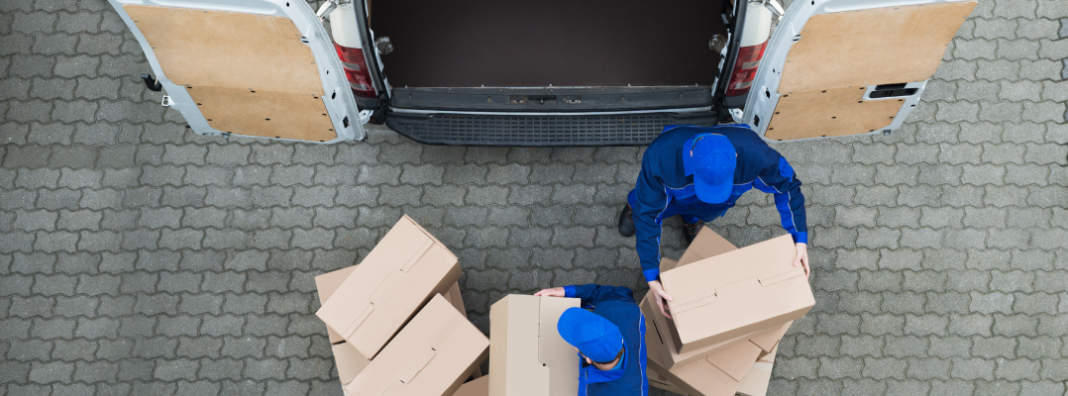
This Earth Day it might make you happy to know your local postman may soon be getting a new ride that is better for him and the environment.
The United States Postal Service (USPS) recently ordered 50,000 new Next Generation Delivery Vehicles.
The new vehicles will replace the dangerous old Grumman Long Life Vehicles (LLVs) that make up over 80 percent of the current USPS fleet. The LLVs are more than 30 years old, have no air conditioning, no airbags, and have a reputation for breaking down and catching on fire. To make matters worse, they average only 8.2 mpg.
The new fleet will include 10,000 electric vehicles, more than double what the Postal Service initially committed to. This is a step in the right direction toward clean package delivery, but a lot of work still needs to be done. The remaining 40,000 new gas-powered vehicles are only expected to get 8.6 mpg with the air conditioning running.
The Postal Service update is long overdue. Many of the vehicles still in service today were built in the 1980s. Likewise, in order to move to a greener future, transportation regulations in the US—from the local to the federal level—are in need of some major updates. Innovation is outpacing regulations that were written for human-driven vehicles and aircraft.
Last-mile delivery is the last part of a package’s journey from the warehouse to your door.
Small changes to last-mile delivery systems are already making an impact on commercial transportation emissions, but the big innovators keep tripping on old regulations. Clean last-mile delivery has the potential to make e-commerce cleaner than brick-and-mortar commerce. The technology exists. We just need regulations as innovative as the technology.
The opportunity
The USPS isn’t the only delivery service trying to reduce its carbon footprint. Commercial delivery emissions are a big, complicated, and growing challenge.
Fueled by the COVID-19 pandemic, e-commerce grew by more than 30 percent in 2020, and recent surveys suggest shoppers have permanently changed their habits. Consumers are rapidly changing to e-commerce and home delivery.
Counterintuitively, this shift may actually have a positive effect on the environment. A study from MIT’s Real Estate Innovation Lab found that e-commerce results in fewer carbon emissions in 75 percent of their simulations.
Last-mile delivery is where the most immediate improvements can and should be implemented. A 2020 report from the World Economic Forum estimates that global demand for last-mile delivery will increase by 78 percent by 2030, leading to major increases in both carbon emissions and traffic congestion in cities worldwide.
Fortunately, due to recent advances in technology, we have the tools to create a world with green package delivery.
Small changes already making an impact
Many delivery companies are already making changes to reduce their environmental impacts. For example, Amazon has recently started testing electric delivery vans in San Francisco and plans to have 10,000 electric vehicles on the road by the end of the year. FedEx offers delivery by electric assisted tricycles.
UPS customers can choose to pay extra to ship carbon neutral packages. UPS will calculate the emissions generated by shipping the package then invest in projects designed to offset an equivalent amount of emissions. Etsy offsets all carbon emissions from all shipping and packaging for items bought on its site.
Other non-delivery companies have explored solutions focused on city infrastructure. Coord, Automotus, and curbFlow—among others—are looking to make parking easier for delivery vehicles.
First, the companies collect data on how parking works in a city. For example, they look at how many streets have parking meters, locate bus and bike lanes, and count how often delivery vehicles end up double parking. Next, working with cities, they create parking zones dedicated to delivery vehicles willing to pay a small fee for guaranteed parking. Vehicle operators can reserve their space ahead of time.
This partnership improves the efficiency of delivery routes. In pilot programs, curb management via these companies has decreased traffic by 20 percent, decreased delivery times, and kept delivery vehicles from circling the block multiple times to find parking, lowering those vehicles’ emissions.
These are solutions companies and cities can adopt today. There are little to no regulations in the way. Some states like California even offer incentives to change to electric vehicles. But these changes are only the beginning, and their impact is limited. To fully eliminate delivery emissions, we need to make room for new and innovative approaches to the last mile.
The future of last-mile delivery
Autonomous, electric delivery could be the future of parcel delivery—if we let it. Technologies currently being tested for autonomous delivery are not only more environmentally friendly, but also have the potential to make life easier for consumers.
Drone delivery is one of the most promising methods of autonomous last-mile delivery. Electric drones produce zero carbon emissions when charged via carbon-neutral energy. And because drones are not restricted to existing roadways, they provide multiple benefits over traditional delivery methods.
Drones don’t add to street congestion—which also means drone deliveries aren’t slowed by street congestion. They can deliver goods on demand, regardless of road conditions.
Zipline, which currently has a limited license to deliver packages in the US, was initially founded to revolutionize medical access in Africa. In one example, Zipline’s partnership with Rwanda’s National Center for Blood Transfusion more than doubled annual throughput and reduced waste by 95 percent. According to Dr. Roger Nyonzima, head surgeon of the maternity ward at Nyanza Hospital, which is over 60 miles from the capital of Kigali,
“Before [Zipline], it took at least three hours to get blood in an emergency…Three hours can make the difference between saving or losing a life. Now we get blood in 15 minutes. Fifteen minutes, we can work with.”
This technology has the potential to not only improve environmental outcomes, but to massively improve the quality of life for many Americans, particularly those who are sick and disabled.
Zipline has made over 290,000 successful commercial deliveries. Amazon and Wing (owned by Alphabet), also have limited licenses to deliver packages after enduring a long certification process to prove the safety of their drone deliveries.
A new set of regulations from the Federal Aviation Administration (FAA) is paving the way to increased drone usage for commercial applications. However, regulations are still very strict, and remain a barrier to entry for potential drone entrepreneurs. No company has approval to fly everywhere without a human monitoring or controlling the drone.
Because of regulation hurdles, you might have to wait a while before your packages are flown to your front door. Autonomous delivery robots, on the other hand, are a more down to earth option—literally.
Delivery robots can be made to drive on sidewalks—like models from Amazon Prime, Coco, and Starlabs—or on the road like Nuro’s R2 robots. Both approaches take up less space and produce less greenhouse gas than conventional delivery.
However, even these rolling, food-toting robots face their own policy issues. There are no consistent standards for autonomous delivery robots. Each city a company operates in can mandate different speed and weight limits.
For road-based vehicles, the regulatory woes can be even worse. Nuro had to petition the National Highway Traffic Safety Administration for a special exemption because the R2 vehicles don’t have windshields, side mirrors, or backup cameras. But these are robots, not human-driven machines. They have 360 degree cameras, lidar, radar and thermal imaging.
In 2019, the New York City Department of Transportation threatened to seize FedEx delivery robots. The reason? Motor vehicles must be operated “having at least one hand” on the steering mechanism. As autonomous vehicles become more prevalent we can expect more friction from these regulations made specifically for human drivers.
Clean last-mile delivery doesn’t have to be science fiction
If you are lucky, you live in a city where you can place an order and have it delivered to your doorstep quickly and cleanly—by a robot. Innovative solutions currently exist to make every last-mile package delivery eco friendly.
Electric vehicles and carbon offsets move us in the right direction, but the real potential is in the innovative technology currently hampered by outdated regulations. It’s time to update.

